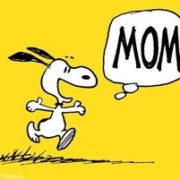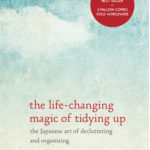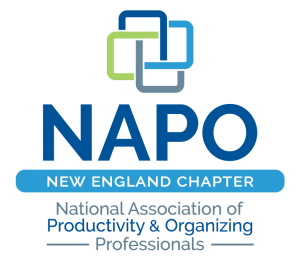Sharing Organizing News With My Mom
 When I saw that it was my Mom on my caller-ID this morning, I smiled to myself. I always enjoy hearing from her. It’s nice to chat, listen to her current news, and share my own. The news I shared with her today was about the 30-Day Minimalism Game that my husband and I are participating in for the month of June. I explained that the game is played by getting rid of one thing on the first day of the month, two things on the second day of the month, three things on the third day, and so on. Whoever can go the longest and get rid of the most things, wins. She was amazed that we would play such a game, and impressed that we were still at it on day 15.
When I saw that it was my Mom on my caller-ID this morning, I smiled to myself. I always enjoy hearing from her. It’s nice to chat, listen to her current news, and share my own. The news I shared with her today was about the 30-Day Minimalism Game that my husband and I are participating in for the month of June. I explained that the game is played by getting rid of one thing on the first day of the month, two things on the second day of the month, three things on the third day, and so on. Whoever can go the longest and get rid of the most things, wins. She was amazed that we would play such a game, and impressed that we were still at it on day 15.
I shared with my Mom how we got inspired to play the game after bringing the film Minimalism: A Documentary About The Important Things to a local theater, and viewing it with 80 other interested viewers. It was an inspiring film that moved my husband and I into action. As of this date, we have each gotten rid of 120 things. So far it hasn’t been too difficult for either of us, but the game instructions warned us that it gets much more difficult after two weeks , which is now. (I’ll be writing more on the subject when the month is over.)
My Mom shared that she has been cleaning out and getting rid of stuff also. She mentioned that she got rid of some extra bed pillows that she wasn’t using. She also went through her wardrobe and got rid of some clothes that she doesn’t wear. The last thing she mentioned was donating her old greeting cards to St. Judes for recycling. This made me smile even more.
It’s always wonderful to get a phone call from my Mom, but it’s even more special when she shares her organizing stories. As a Professional Organizer I can’t helped but get pumped up when I hear stories about other people organizing and cleaning out their spaces. If you have a story to tell please share it with me.
©June 2016 Janine Cavanaugh, Certified Professional Organizer® All Rights Reserved









Follow Me